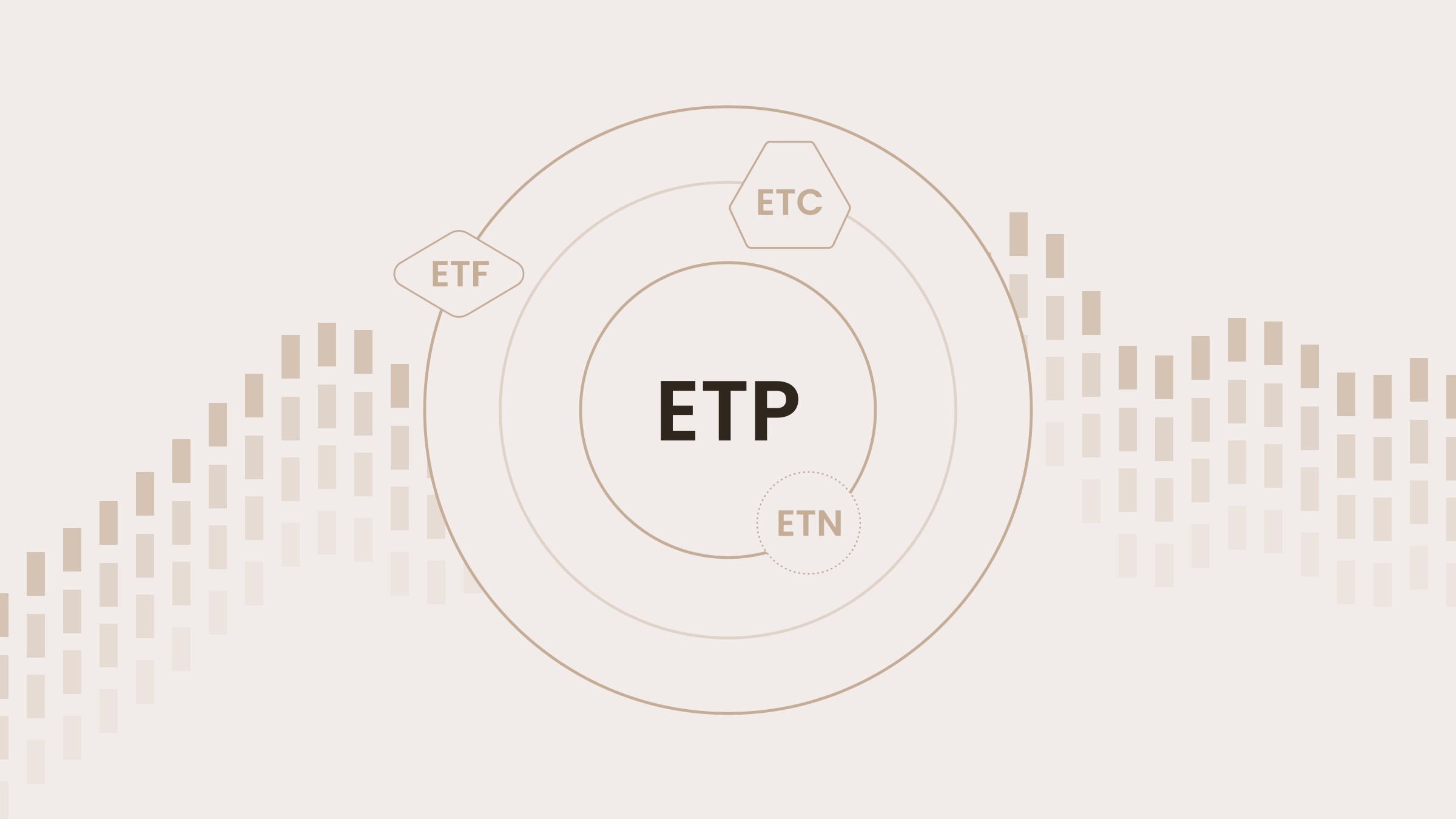Exchange-traded notes (ETNs)
ETNs work a little differently. Instead of holding underlying assets, they are unsecured debt instruments tied to the performance of a market index or other benchmark. Because ETNs are issued by financial institutions, they carry credit risk, which means your return depends not only on the performance of the index, but also on the issuer’s financial stability. While they lack the asset ownership seen in ETFs, ETNs can be an efficient way to access certain niche markets or strategies.
Exchange-traded commodities (ETCs)
If you’re intrigued by commodities like gold, silver, or oil but don’t want the hassle of managing physical assets, commodity ETPs can be an excellent choice. These products track the value of physical commodities, letting you benefit from price changes without needing to store or handle the commodities yourself. They’re especially popular among investors seeking to hedge against inflation or diversify their portfolios with tangible assets.
How ETPs work
At their core, ETPs are designed to mirror the performance of specific benchmarks. How they achieve this varies.
Replication methods
Exchange-traded products use two main approaches to track their benchmarks. The first is physical replication, where the ETP actually owns the underlying assets. For instance, an ETF tracking the S&P 500 would hold shares in all 500 companies included in the index. The second approach is synthetic replication, which relies on financial derivatives like swaps to mimic the desired performance. While synthetic ETPs expand access to markets that are difficult to replicate physically, they come with added complexity and counterparty risks.
Market tailoring
Another interesting feature of ETPs is their ability to target specific segments of the market. Some focus on particular sectors, such as technology or healthcare, while others specialize in certain asset classes like gold, oil, or even cryptocurrencies. Additionally, an ETP could represent the top-performing assets of a country, such as blue-chip stocks or government bonds, giving investors exposure to international markets. This flexibility opens the door to tailored investment strategies, whether you’re looking to grow your wealth in high-potential sectors, hedge against risks, or diversify globally.
Metrics such as liquidity, trading volume, and expense ratios also play a crucial role in helping investors evaluate whether a particular ETP aligns with their financial goals.
Pros and cons of ETPs
Like any financial instrument, exchange-traded products come with their own set of advantages and potential drawbacks. Here’s a balanced look to help you weigh your options.
Pros |
Liquidity: ETPs are traded throughout the day on stock exchanges, making it easy to enter or exit positions. | Transparency: Regular updates on holdings ensure that you know exactly what you’re investing in. | Diversification: With a single ETP, you can access multiple asset classes, markets, or sectors, saving you time and effort. | Low costs: Compared to actively managed funds, ETPs often have lower fees, helping you keep more of your returns. |
Cons |
Market volatility: Just like stocks, ETP prices can fluctuate during the trading day, which might not suit risk-averse investors. | Tracking errors: Sometimes an ETP’s performance doesn’t perfectly match its benchmark, which can lead to small discrepancies over time. | Credit risk: This is primarily a concern with ETNs, as they depend on the creditworthiness of the issuing institution. |
By understanding the different types of ETPs, how they work, and their pros and cons, you’ll be better equipped to decide if they fit into your investment plans. The world of exchange-traded products is full of possibilities. Whether you’re a first-time investor or a seasoned market participant, there’s likely an ETP out there to match your financial goals and risk tolerance.
ETPs vs. other financial products
Exchange-traded products offer unique advantages compared to other financial instruments. Unlike mutual funds, which are only traded at the end of the day, ETPs can be bought and sold throughout the trading day, providing real-time pricing and greater flexibility. They also tend to have lower management fees, which can help reduce overall investment costs.
Compared to individual stocks, ETPs stand out for their diversification benefits, allowing investors to access multiple assets or an entire market index through a single product. This combination of affordability, intraday tradability, and diversification makes ETPs an appealing choice for many investors.
Summary
ETPs are a modern, flexible solution for investors looking to diversify their portfolios and gain exposure to a wide range of assets. Whether you’re buying into commodities like gold, tracking stock indices, or exploring bond markets, ETPs provide an easy way to access these opportunities without the complications of direct ownership.
If you value transparency, real-time tradability, and cost-effectiveness, ETPs might just be the perfect fit for your investment strategy. Take some time to explore the options available, and you might find that these versatile products open up a whole new world of investing possibilities for you.
Now that you’ve got a better understanding of how ETPs work and what makes them special, why not take the next step? Look into the various ETPs available on the market and see how they could align with your financial goals.

.jpg)